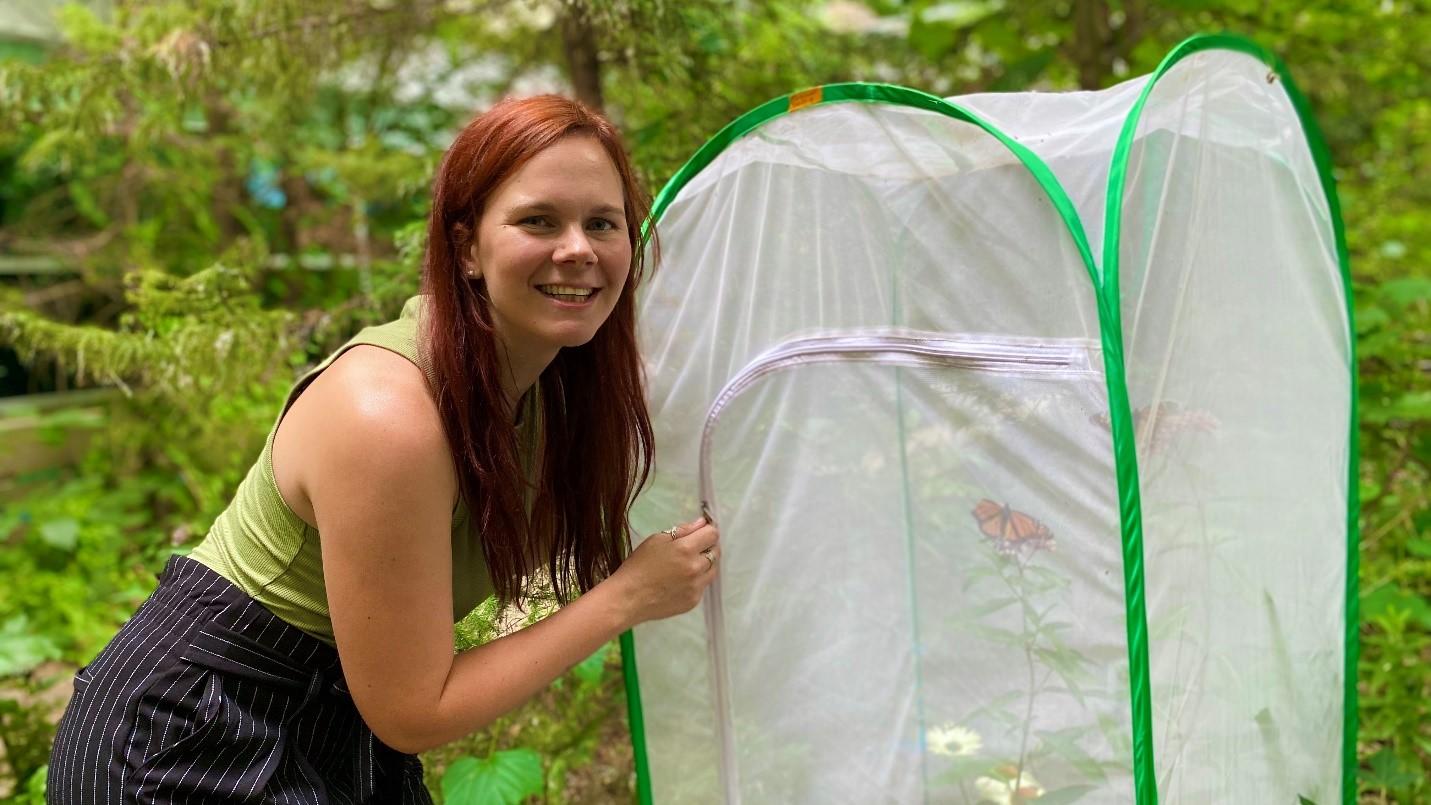The Danaus plexippus plexippus travel from southern Canada to Central Mexico during their annual migration. Unfortunately, these spectacular butterflies are endangered. This is partly because their migration is understudied. Tracking insects over long distances is challenging, but scientists are turning to a novel reliable tool — stable isotope analysis.
Megan Reich, a PhD candidate supervised by Professor Clément Bataille, used strontium isotope (87Sr/86Sr) ratio analysis to study monarch butterflies’ migration. Over more than 74 days of solo fieldwork through 22 U.S. states, she collected milkweed — the monarch’s host plant. She analysed the 87Sr/86Sr in milkweed and monarch wings with a new microFast injection system connected to a Multi-Collector Inductively Coupled Plasma Mass Spectrometer. Megan then used a machine learning algorithm to create a spatial map of 87Sr/86Sr variations across North America, and compared it to the 87Sr/86Sr of butterfly wings to determine where they originated. She is the first author of a peer reviewed paper presenting her results in Methods in Ecology and Evolution.
Megan just published a second manuscript for a special issue of Frontiers in Ecology and Evolution, on the cycling, incorporation, and preservation of metals and metal isotopes in insect tissues. This is an important prerequisite to using these markers for geolocation, trophic studies, or estimating pollution exposure. Megan also plans to study more butterfly migration as she completes her PhD in the coming year.
“I am excited to finish the last chapters of my thesis, which will apply the isotopic techniques I have been developing to questions regarding the genetic basis of insect migration in the painted lady butterfly,” says Megan. She received a MITACS Globalink award to work with the Backström Group at Uppsala University (Sweden), where she will spend the rest of her PhD performing genome scans of butterflies to explore if migratory propensity is associated with specific genetic variations.
International collaboration has been integral to Megan’s research. Her mentors from Sweden, Spain, the U.S., and Canada shared invaluable expertise to make her interdisciplinary research possible and inspired her to broaden her horizons.
Megan has served as a mentor and role model in the Spatio-temporal Analytics of isotopes Variations in the Environment (SAiVE) Lab for several years. Last year, she mentored undergraduate student Eve Lindroos for her honours project. Megan and Eve designed the project, which involved rearing monarchs to test the robustness of isotope geolocation tools. This work earned Eve the best poster award at the undergraduate symposium and was recently published in a special issue of Frontiers in Ecology and Evolution.
Outside the lab, Megan is very involved in the university community, serving as an executive member of the Biology Graduate Student Association and a Director of the uOttawa Graduate Students Association.
Read more:
